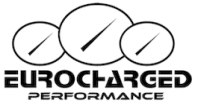Results 1 to 15 of 15
Threaded View
-
10-16-2010, 11:27 AM #1
 Timeout
Timeout


- Join Date
- Feb 2010
- Location
- NJ
- Posts
- 13,412
- Rep Points
- 58.0
- Mentioned
- 318 Post(s)
- Rep Power
- 0
Meth/Water write up, great knowledge
In doing some research, i found a few things
The best part I have found so far is the meth/water ration by mass, not volume. I know its been debated before but i like this guys arguing points
Good Information Here.
Original Post:
http://www.turbobuicks.com/forums/al...knowledge.html
Knowledge is power. I like to share what Ive come to know about meth/water and its abilities, heres some info I have gathered. Gets pretty deep into theory, and tuning. Any questions, Pm me. Enjoy.
-gary
Set up shown in links made 639 hp/649 tq on a 2.48 liter, pump gas in the tank, and 15* timing. Meth water is a great tool.
I use unlubricated Methanol purchased at PBJ,120 octane, and I believe its in the $2-$3/gal range, I only refill a 5 gallon blue diesle jug (makes accidently filling the lawn mower with meth impossible) about once ever 3 months so don't hold me to the price. I mix my meth 50% meth / 50% ice cubes inside of a winshield washer jug. Its mixed, the methanol melts the ice while staying in the 32-33* range, then put into the freezer before I go out, next time I pull the bumper Im going to wrap my tank with header wrap to help keep the mixture colder for longer. I log with my Scan gauge, this mixture nets me 60*-80* intake temps at WOT on warm days. This # is without spraying N20 in the charge pipe.
Covers AFR's, latent heat, ignition timing, pre detonation, detonation, lambada sensors, benifits of meth, benifits of water and so on.
Id also like the people who are spraying meth/water to list their personal expirences with it, what kit, mixture, how it helped, how it didn't help and so on.
As one of (if not the, I don't really recall for sure) the first supercharged guys to do water/methanol a few years back, my setup has basically "just worked" for a long while now. Now that I've moved to 11 pounds w/ 06 tsx cam in 100+ degree heat, I find myself needing to make adjustments to keep the detonation fairy and her pings of doom from claiming my 75k oem motor. For a while, off and on, I've dropped little nuggets of explanation in chat threads and random threads -- but I haven't really created a technical resource for those who really want hard info on what is going on behind the scene. This thread aims to fill that void, confuse some of you, and enlighten (hopefully) the rest of you that want to understand things better. If you get confused, ASK questions -- you won't be the only one, and hopefully we can turn this thread into something really useful for others.
First, before we start, we need to get vocabulary out of the way. Without knowing the following terms, you won't get very far here.
-Air/Fuel Ratio
An air/fuel ratio describes how many parts of air and fuel are present during combustion.
-Stoich
Stoich comes from stoichiometry. Stoich, for our purposes, describes the condition where combustion of the air/fuel mixture leaves no remaining oxygen or fuel. I sometimes refer to it as perfect combustion, but don't confuse that with being what you should want at all engine operating conditions.
-Stoich Point
A ratio that defines how many parts fuel to oxygen you need for stoich mixture. The Stoich point of gasoline is 14.7:1, or 14.7 parts oxygen to one part fuel. The stoich point of methanol is 6.4:1.
-Lambda
Loosely defined for our goals, it describes, via a percentage, how much fuel or oxygen was needed for stoich combustion. A lambda value of 1 is stoich. A lambda value of .85 means 85% of your fuel was burned, and 15% of it was left over. A lambda value of 1.15 means 15% of your oxygen was not used, and 85% of it was.
-Lean/Rich
Lean describes a condition when too little fuel is present in your combustion event to be stoich. Rich describes a condition when too much fuel is present in your combustion event to be stoich. A rich mixture has a lambda less than 1.0, a lean mixture has a lambda greater than 1.0. Rich/lean is also used to describe having too much or too little fuel in relation to what is desired, not just in relation to stoich. For instance, even though 14.7:1 is stoich for gasoline combustion, and by definition is not lean, it is far too lean for wide open throttle to be safe, and should be richer.
-Lambda sensor
Your wideband oxygen sensor. It is called a lambda sensor, or air/fuel sensor, because it detects and informs the engine computer the lambda of the combustion event that has just happened -- in other words, how close it was to stoich. Kmanager converts the lambda values to "gasoline air/fuel" ratios for you by multiplying the lambda by the stoich point of gasoline. For example, .85 lambda is .85 * 14.7 = 12.5:1 a/f. The lambda sensor, engine computer, and kmanager are totally unaware of what fuel you are running. If you were to run pure methanol, and tune your car to a perfect stoich air/fuel ratio of 6.4:1, the lambda sensor would see 1.0, and kmanager would report this to you as 14.7:1. It is important that you realize that the air/fuel ratios you know and love are simply a calculation based upon empirical measure that is NOT actually parts of fuel to parts of oxygen. It is also important to realize that when you run a combination of methanol and gasoline, your air/fuel number scale in your head that says "11.5 is safe for boost, 13.2 is not" is still 100% valid and useful -- just think of it as "this is the air/fuel ratio I would be running if I was running purely on gasoline." 11.5:1 gasoline air/fuel ratio literally means 11.5/14.7 = .78 lambda, or 78% fuel was burned, 22% remained unburned (and absorbed heat).
-Methanol
Methanol is a simple alcohol with a stoich point of 6.4:1. It melts/freezes at -98C and has an octane rating of around 120. It has a relatively low flash point, so mixing with water, in addition to adding more cooling benefit to your water/methanol mixture, adds safety by increasing its flash point.
Knock
An engine noise -- not good. Knock generally falls into two categories: spark knock (detonation) and rod knock (or other physical problem with the motor that makes you tear it down).
-Detonation
Detonation is far less harmful than it sounds, but leads to things more dastardly such as pre-ignition or engine damage if left unchecked, especially if the detonation is severe or the engine is already operating near it's physical limits. Detonation is an event that happens AFTER normal ignition of the compressed air/fuel ratio as the cylinder is moving down on the power stroke. Detonation occurs when the air/fuel mixture transitions from burning (granted, very fast) to exploding (hence the word detonation). Ideally, the air/fuel mixture should burn across the time when the piston is moving down on the power stroke. If for some reason the mixture cannot sustain normal combustion under the heat/pressure it is being exposed to, and explodes, this is called detonation. It delivers a large amount of force to the piston very quickly for a very short period of time producing an audible sound referred to as a "ping", and hence "pinging" is another term to describe a motor that is detonating. It heats up the combustion chamber quickly. Normally, when you encounter detonation, it is near the end of the normal combustion event. This is especially true for detonation you encounter from running too much ignition timing -- you can literally think of this as the burn beating the piston. Denser mixtures burn faster -- that's why more boost dictates less ignition timing. Detonation can be caused by too much ignition timing, too little octane, too hot of intake temperatures, or too lean of a mixture.






 Quote
Quote










Welcome to a...
Killakuer654 is now here!